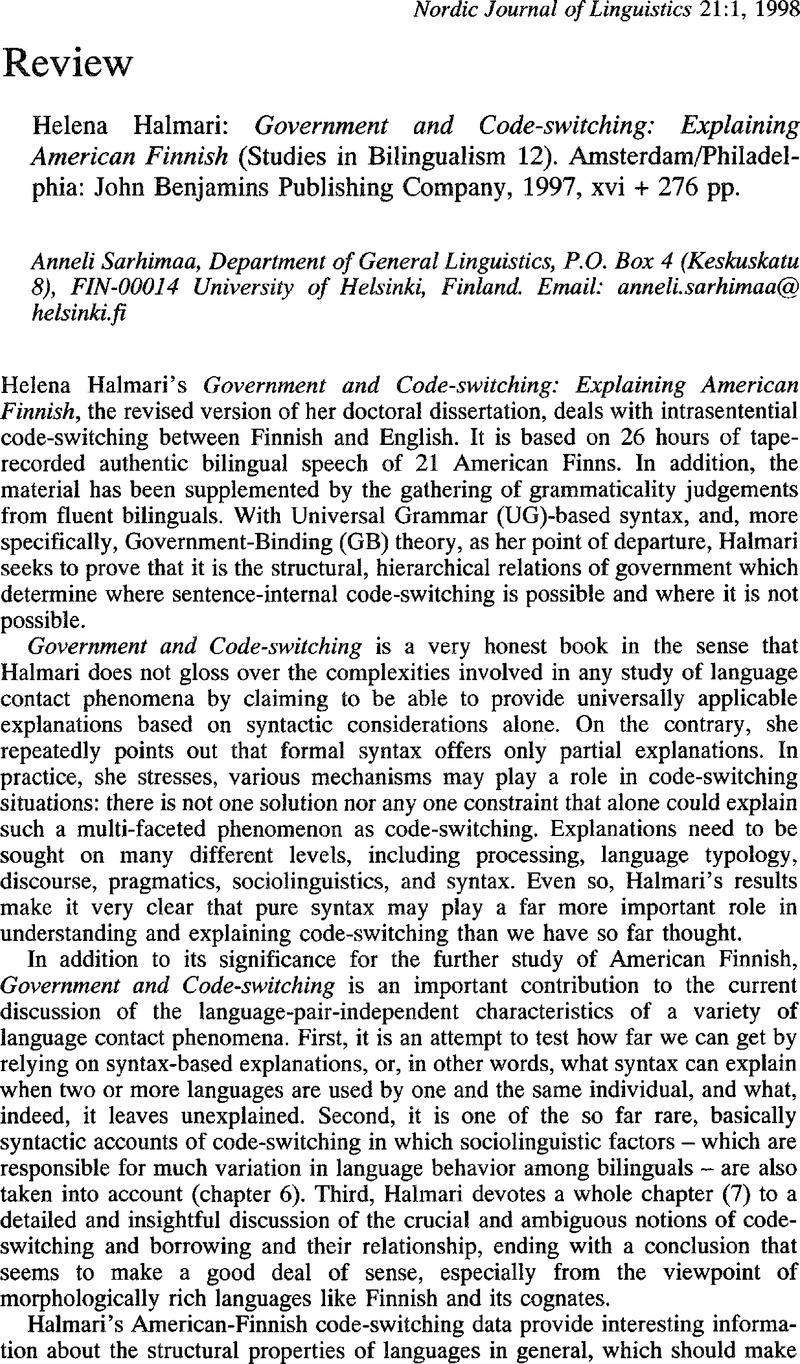Crossref Citations
This article has been cited by the following publications. This list is generated based on data provided by Crossref.
Boumans, Louis
2001.
Searching for syntactic explanations of code switching. Review of Government and Codeswitching. Explaining American Finnish, by Helena Halmari.
Linguistics,
Vol. 39,
Issue. 2,





